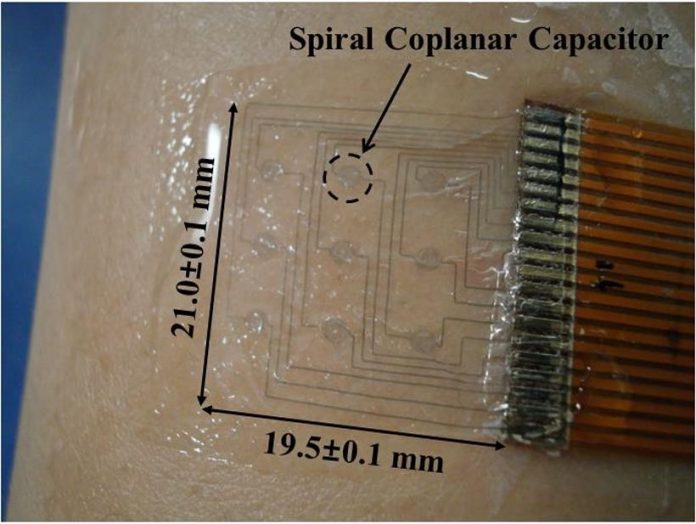Emotions will soon be detected and collected to produce more personalized advertising content, media content, and even control of room temperature according to the results of the first detector that is capable of collecting emotionally triggered data. Young-Ho Cho and colleagues at KAIST (Korea Advanced Institute of Science and Technology) in Daejeon, South Korea have developed and tested the first reliable wearable device that can detect goose bumps.
Goose bumps or piloerection are caused by changes in temperature and changes in emotional states. The 20 millimeter square detector contains tiny capacitors that are embedded in a coating of poly(3,4-ethylenedioxythiophene) polystyrene sulfonate (PEDOT:PSS) that promotes conductance. The encapsulated capacitors and conducting polymer were covered with a silicon substrate known as Ecoflex 0030. The silicon substrate provides flexibility and prevents any toxic problems to the wearer. The entire polymer complex is 1.2 micrometers thick.
Emotional changes as presented by the appearance of goose bumps produce a deflection of the polymer that produces a charge that is picked up by the capacitors and can be detected directly or wirelessly. The reproducibility of the apparatus was tested with ice and a human volunteer. The refinements needed to detect the subtleties of human emotion as presented by goose bumps are being developed.
The developers expect this detector to be the first in a series of similar wearable devices that can detect emotional responses in humans. The next incarnation may be an array that is equally as small that detects a wide range of biochemical or chemical changes that are associated with emotions. The basic idea is to tailor internet viewing, motion pictures, music, and almost any form of art or publication to the emotional response of the wearer. The device in essence reduces human emotion to a commodity that can be used as a sales tool.
Furniture, tablet control devices, and even large rooms can be fitted with emotional detection equipment that responds to the user or users. The benefit of immediate response to emotion for sales could be extraordinary. The technology is here today. People that hold human emotion in a high state of regard may rebel at being so easily and pervasively manipulated.
Most people are so used to being emotionally influenced by media that they may never notice the change. Government may take steps to curtail emotional monitoring if this activity is considered an invasion of privacy or an attempt at creating a monopoly. The brave new world of electronic emotional marketing is probably less than a year away.















